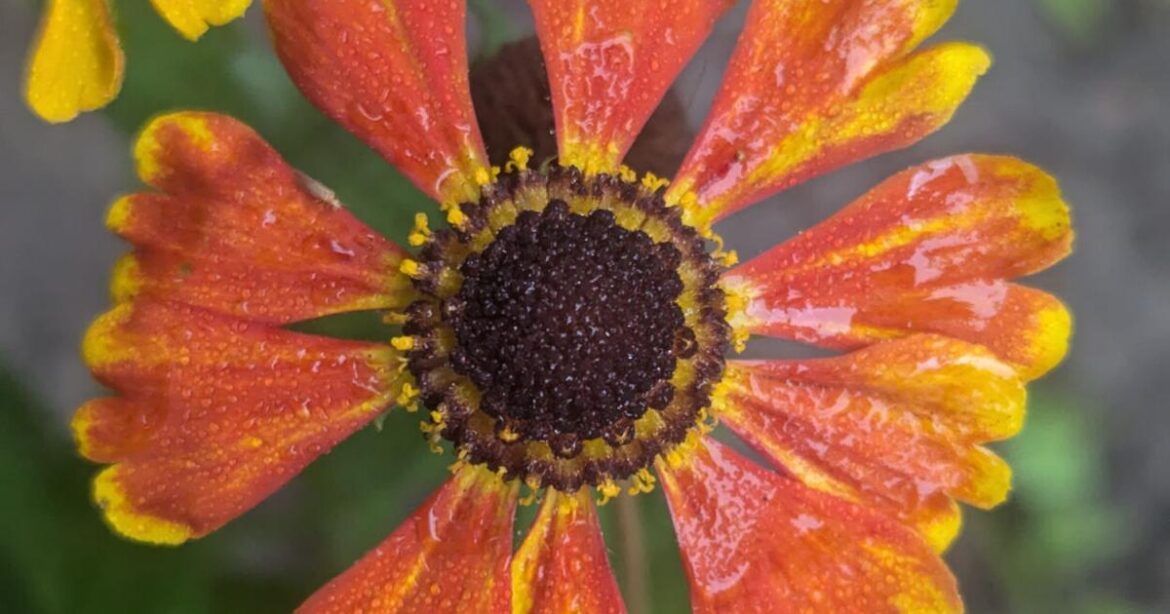Spring is the season with the most flowers. Winter is generally the season with the least.
That is, of course, a generalization. There are plenty of flowers that bloom exclusively for winter color. Plenty more bloom randomly throughout the year, regardless of season.
For now, late summer flowers are the most prominently colorful. Autumn flowers will be next.
Realistically, no bloom is random. Even flowers that bloom randomly throughout the year do so only because they can. Such flowers are mostly from mild climates where they can disperse seed at any time.
Any pollinators that they rely on are also active throughout the year. Many randomly blooming flowers can effectively conform to more distinct seasons.
Most flowers bloom within a distinct season because it is most convenient for them.
Most bloom for spring to maximize the time for their seed to develop before winter.
Many of the earliest are tiny but abundant because they rely on wind for pollination.
Later flowers can be bigger and more colorful to attract pollinators. Late summer flowers are no exception.
Different flowers have different priorities. Some of the earliest spring bloom needs time to produce seed after bloom. Several late summer flowers conversely need time to develop their blooms. Then, they produce seed relatively quickly before winter.
This is why some late summer flowers are bolder but less abundant than spring flowers. They require time.
For example, sunflowers with relatively small blooms may bloom as early as late spring.
However, those with bigger and bolder blooms are more familiar as late summer flowers. Such big blooms do not grow quickly, but are ready for their late pollinators nonetheless.
They compensate for their lack of abundance with spectacularly grand individual bloom.
Many late summer flowers happen to be related to sunflowers. They include coneflower, dahlia, zinnia, sneezeweed, aster, and cosmos. Dahlias with larger flowers are later than those with smaller flowers.
Marigold and chrysanthemum will become more seasonable later and into autumn. Unrelated canna and various sages are blooming well about now.
Sneezeweed
Contrary to its silly name, sneezeweed, Helenium autumnale, does not cause sneezing.
Its flowers produce heavy pollen that relies more on pollinators for dispersion than wind.
Its vibrant yellow, orange or red floral color attracts all sorts of bees, butterflies and such. Bloom may begin as early as the middle of summer, or continue as late as early autumn.
Sneezeweed is a perennial like black eyed Susan, but with a somewhat shrubbier form.
It can grow three or four feet tall without growing any wider than two or three feet.
Foliage has a rather fine texture with lanceolate and somewhat serrate leaves.
Individual flowers are about two or three inches wide, and delightfully abundant. They are nice cut flowers.
Sneezeweed may self sow, but some cultivars are not true to type. For them, division is a more reliable method of propagation.
‘Pumilum Magnificum’ provides vivid yellow bloom. ‘Chippersfield Orange’ provides vivid orange and yellow flowers. ‘Kupfersprudel’ blooms with a bit more yellow than orange.
‘Bruno’ blooms with deeply rich ruddy brown flowers. ‘Butterpat’ provides rich golden bloom. Several cultivars are compact.


Comments are closed.